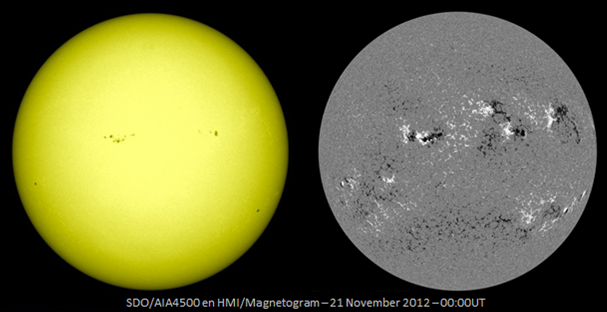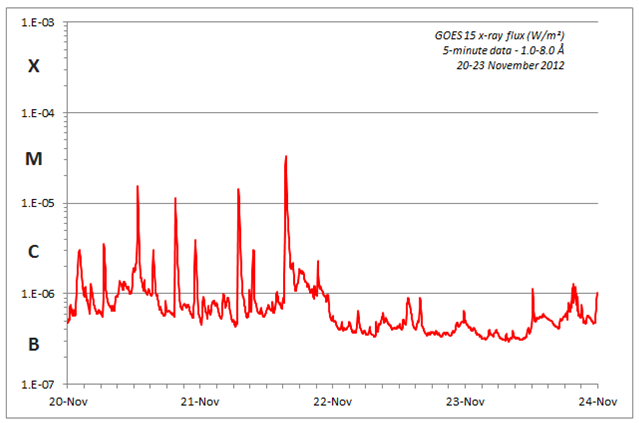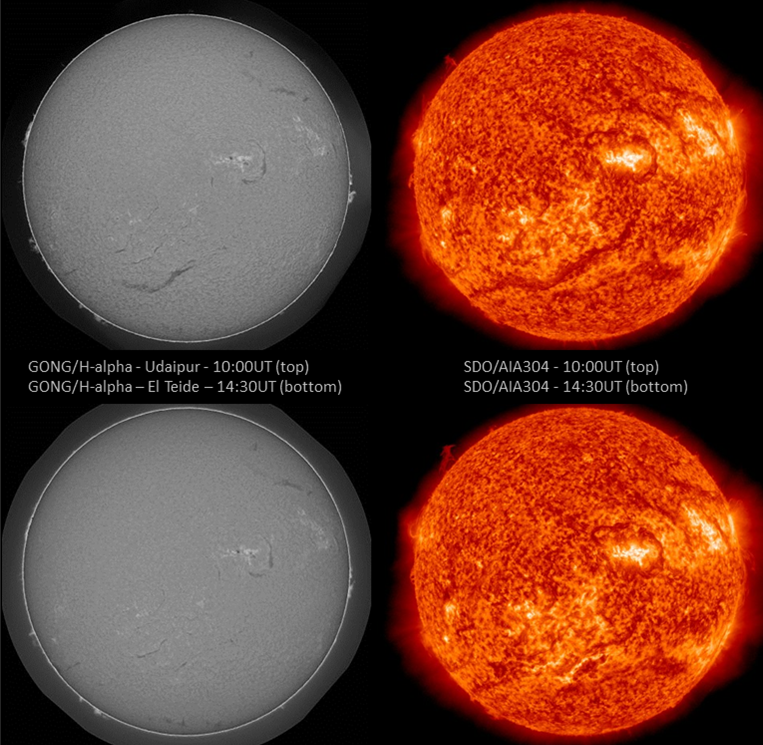Last week had a couple of days with increased solar activity. For the period of 20 to 23 November, 4 movies in as many different wavelengths were created showing some impressive dynamics in the Sun's atmosphere. Imagery for these clips was taken from the GONG/H-alpha Networkand from SDO/AIA and HMI.
Movie 1 (SDO / AIA4500) shows the Sun as it appeared in white light. Except for the moderately complex active region NOAA 1618, the other sunspot groups were not very impressive. The image underneath shows the Sun on 21 November at 00:00UT in white light. The magnetogram to the right indicates that some sunspots in NOAA 1618 had magnetic fields of opposite magnetic polarity (white and black) and were also very close to each other. This suggested some magnetic mixing, and a possible "short-circuiting" between these magnetic fields was expected.

This forecast came true. The flaring activity was in proportion to the complexity of the sunspot groups, with 4 medium flares on 20 and 21 November. NOAA 1618 produced 3 of these M-flares, the strongest being an M3.5 during the afternoon of 21 November. The source region for the first M-flare was NOAA 1611 (behind the northwest limb).

During these two days, there were also plenty of prominence eruptions and disappearing filaments, often with multiple events going on at the same time. From the GOES15 x-ray chart above, one might think that solar activity became a bit dull on 22 and 23 November. In reality, the chromospheric activity continued to be very interesting, culminating in a very nice filament eruption around noon on 23 November (12:00-16:00UT). Note that these events were not accompanied by x-ray flares, but often only "enhanced" the x-ray flux (e.g. the 23 November filament eruption).

Movie 2 shows all this activity in the chromosphere (H-alpha; GONG), movie 3 displays it in the slightly hotter transition zone (SDO/AIA304; about 50.000 degrees), and movie 4 portrays the events in the lower corona (SDO/AIA193; well over 1 million degrees). It is amazing how different the details of the various events look like in these 3 movies. It's worthwhile to focus on one feature (a filament, prominence, active region,...) in one wavelength, and then to compare its evolution in the two other wavelengths. Over the 4 days and 3 wavelengths combined, there are at least 15 obvious features that can be tracked (the flares in NOAA 1618 count as 1...)!
 |
 |





